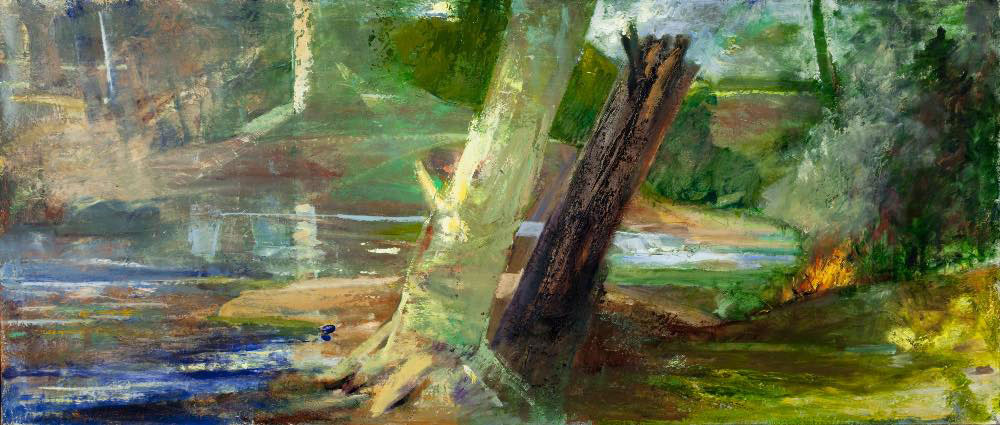Beal’s selected works fire the imagination
Don Wilkinson,
South Coast Today/The Standard Times
November 8, 2013
southcoasttoday.com/story/entertainment/local/2013/11/09/review-beal-s-selected-works/41949383007/

I have been fond of the paintings of Donald Beal for more than three decades, when we both attended the Swain School of Design in the late ’70s and early ’80s.
In those 30-plus years, Beal’s work has continually progressed from the sometimes clumsy and tentative visual theatrics of an undergraduate student painter, through the more carefully attuned explorations of a grad student at Brooklyn College and at the Parson New School of Design in New York City (from which he received his MFA in 1983), and onto the tight and aesthetically sophisticated work of an accomplished, mature artist, who has displayed everywhere from St. Louis to Beijing. He currently exhibits at Crowell’s Fine Art Gallery.
But even with my long association and familiarity with Beal’s work, his newest exhibition, simply titled “Donald Beal: Selected Works” was a revelation to me. The painting called “Invented Landscape” features a grouping of barren birch trunks in an off-center foreground. Far in the background, clouds of gray and lavender cap a sliver of denim blue sea and a rising pale green hill. Within the visual embrace of tree’s empty branches, far in the distance, a tiny lone figure, dressed in a fleck of brilliant red, stands with a small brown-and-white dog, a broken reflection in a nearby puddle or stream.
In “Mythological Landscape,” two great chunky diagonal bands of color — again, barren tree trunks — break the horizontal picture plane. A small fire blazes on the right, the sky intrudes from the top, water seeps in from the left, and the earth holds its own, defiantly. Purposeful invocation or not, with his choice of title and the loaded symbolism of the painting’s elements, Beal suggests the mystical elements of alchemy: fire, air, water and earth.
“Addison Maine (Remembered)” is a powerful work and the one that greets the viewer as one enters the gallery. A majestically cloud-populated sky of teal, tainted whites, purples and graying blues hovers over a landscape of gestures, suggesting but not overly articulating structures, roads and elements of the landscape. It features a seemingly favorite subject of Beal’s: the transition line between land and sea, where the imagination is set free and metaphor runs deep.
Beal uses not only brushes in the application of paint to his surfaces, but also the palette knife, which allows for a kind of mark-making that breaks the surface tension and creates strokes that “feel” different. Beal notes also using “rags, fingers, and hands” as painting tools. I have no doubt that he would utilize a torn strip of cardboard, a Popsicle stick or a monkey wrench as well, if it proved to make interesting marks.
In “Standing Woman (Daydreaming),” a female figure, perhaps a waitress or a cook, wearing a gray apron tied at her waist, stands in front of a table. She is ambiguous, almost featureless. She is framed in a field of blue, balanced by a red orb (tomato? apple?) on one side and a vibrant green glass vase on the other. In her hand dangles a yellow cloth and a paring knife. Is she daydreaming or is Beal?
Then, an epiphany: I began to note a theme in many of the titles: daydreaming, mythological, remembered, invented “¦
Was he not working at the easel in the field or the kitchen? Was he not working from observation? Was this all imagination? The work seems so “¦ real. And then, I read his artist statement in which he confirms my suspicions. His work is (primarily) an invention of memory, of myth, of a history of looking, and it is beautiful. They are figments and pigments of the imagination.